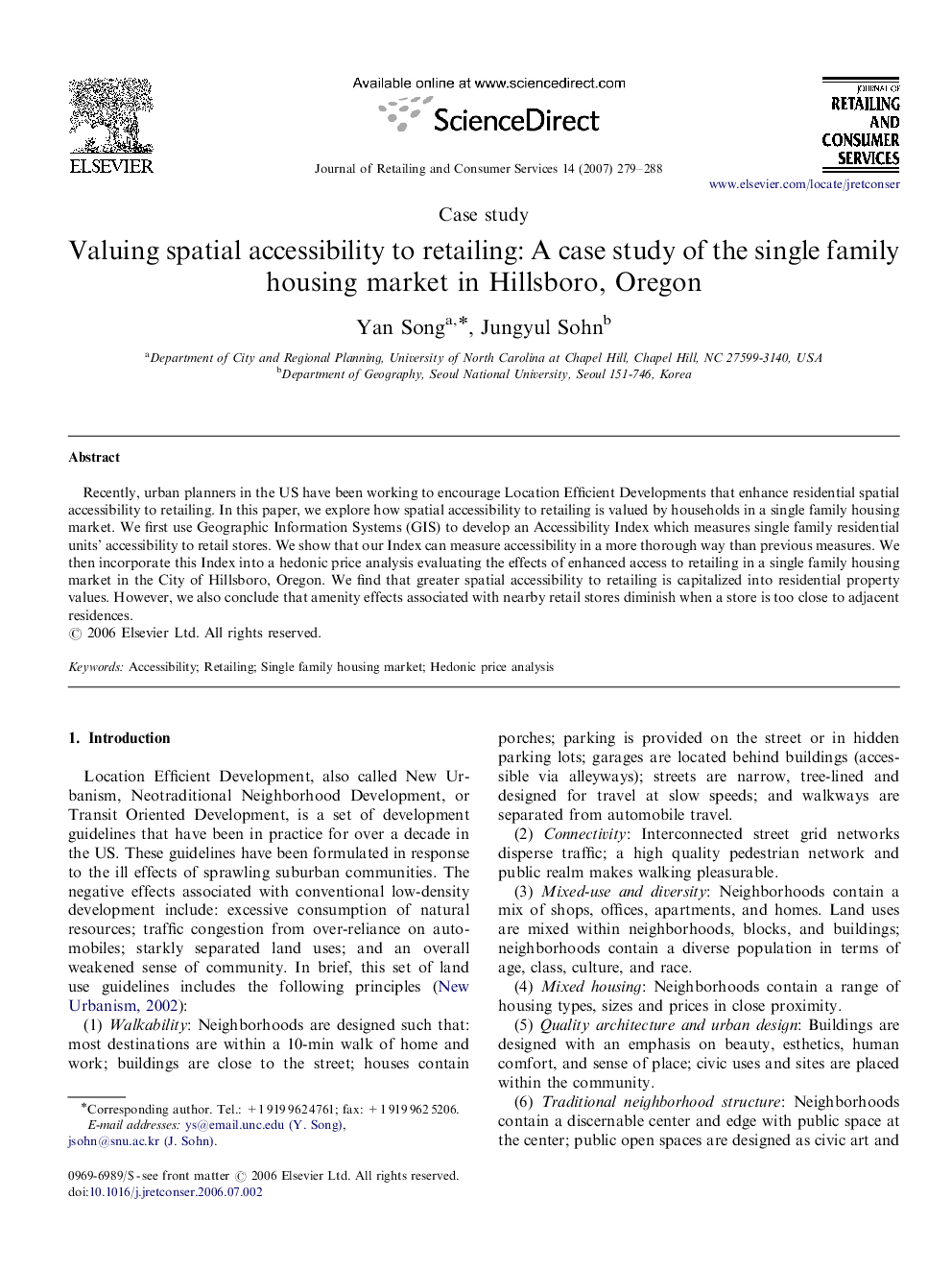| Article ID | Journal | Published Year | Pages | File Type |
|---|---|---|---|---|
| 1029623 | Journal of Retailing and Consumer Services | 2007 | 10 Pages |
Recently, urban planners in the US have been working to encourage Location Efficient Developments that enhance residential spatial accessibility to retailing. In this paper, we explore how spatial accessibility to retailing is valued by households in a single family housing market. We first use Geographic Information Systems (GIS) to develop an Accessibility Index which measures single family residential units’ accessibility to retail stores. We show that our Index can measure accessibility in a more thorough way than previous measures. We then incorporate this Index into a hedonic price analysis evaluating the effects of enhanced access to retailing in a single family housing market in the City of Hillsboro, Oregon. We find that greater spatial accessibility to retailing is capitalized into residential property values. However, we also conclude that amenity effects associated with nearby retail stores diminish when a store is too close to adjacent residences.
